Graphics Programming
2D Transformations
Thorsten Thormählen
October 31, 2022
Part 5, Chapter 1
Thorsten Thormählen
October 31, 2022
Part 5, Chapter 1
This is the print version of the slides.
Advance slides with the → key or
by clicking on the right border of the slide
Slides can also be advanced by clicking on the left or right border of the slide.
| Type | Font | Examples |
|---|---|---|
| Variables (scalars) | italics | $a, b, x, y$ |
| Functions | upright | $\mathrm{f}, \mathrm{g}(x), \mathrm{max}(x)$ |
| Vectors | bold, elements row-wise | $\mathbf{a}, \mathbf{b}= \begin{pmatrix}x\\y\end{pmatrix} = (x, y)^\top,$ $\mathbf{B}=(x, y, z)^\top$ |
| Matrices | Typewriter | $\mathtt{A}, \mathtt{B}= \begin{bmatrix}a & b\\c & d\end{bmatrix}$ |
| Sets | calligraphic | $\mathcal{A}, B=\{a, b\}, b \in \mathcal{B}$ |
| Number systems, Coordinate spaces | double-struck | $\mathbb{N}, \mathbb{Z}, \mathbb{R}^2, \mathbb{R}^3$ |

$\tilde{\mathbf{p}}= \begin{pmatrix} \tilde{x}\\ \tilde{y}\end{pmatrix} = \begin{pmatrix} x + t_x\\ y + t_y \end{pmatrix} = \mathbf{p} + \begin{pmatrix} t_x\\ t_y \end{pmatrix} = \mathbf{p} + \mathbf{t}$


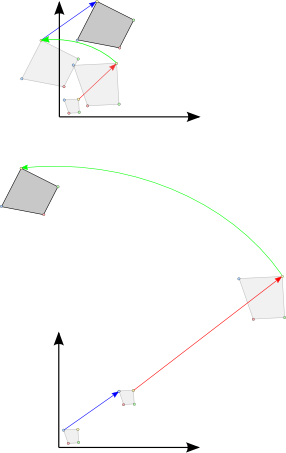
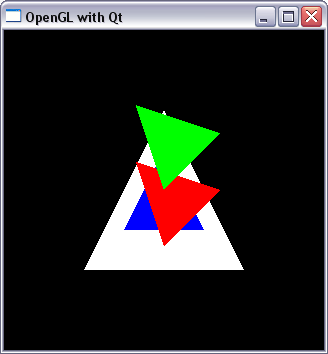
class Renderer {
private:
void drawTriangle() {
glBegin(GL_TRIANGLES);
glVertex3f(-0.5f, -0.5f, 0.0f);
glVertex3f( 0.5f, -0.5f, 0.0f);
glVertex3f( 0.0f, 0.5f, 0.0f);
glEnd();
}
public:
void init() {}
void resize(int w, int h) {
glViewport(0, 0, w, h);
}
void display() {
glClearColor(0.0f, 0.0f, 0.0f, 0.0f);
glClear(GL_COLOR_BUFFER_BIT);
glOrtho(-1.0f, 1.0f, -1.0f, 1.0f, -1.0f, 1.0f);
glLoadIdentity();
glColor3f(1.0f, 1.0f, 1.0f);
drawTriangle();
glColor3f(0.0f, 0.0f, 1.0f);
glScalef(0.5, 0.5, 0.0); // resize to 50%
drawTriangle();
glColor3f(1.0f, 0.0f, 0.0f);
glRotatef(45.0, 0.0, 0.0, 1.0); //rotate 45 degrees
drawTriangle();
glColor3f(0.0f, 1.0f, 0.0f);
glTranslatef(0.5, 0.5, 0.0); // translate
drawTriangle();
}
void dispose() {}
};
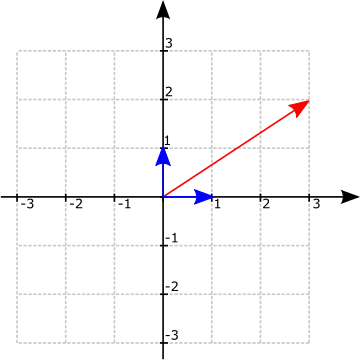
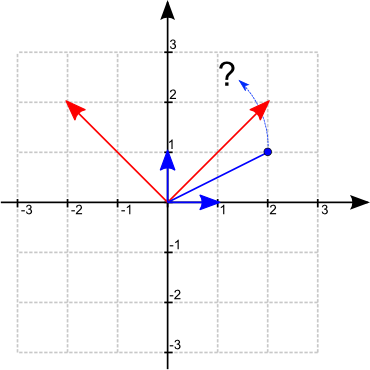
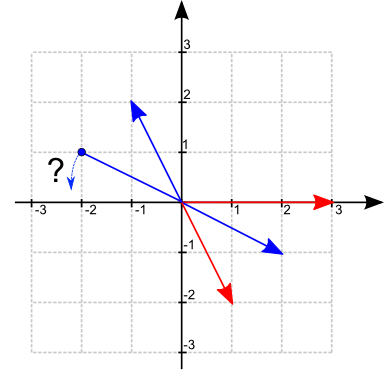
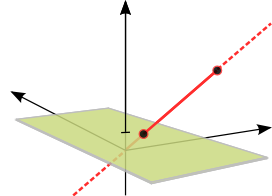
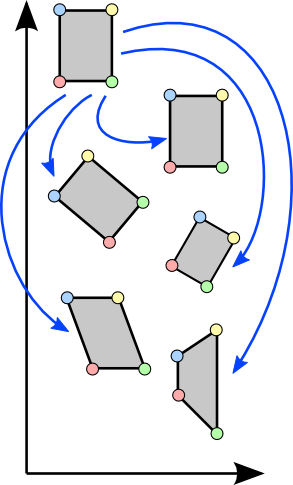
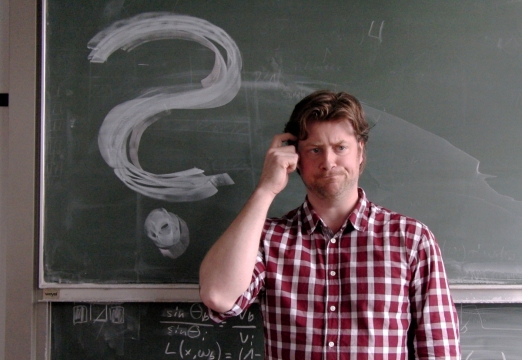
Please notify me by e-mail if you have questions, suggestions for improvement, or found typos: Contact